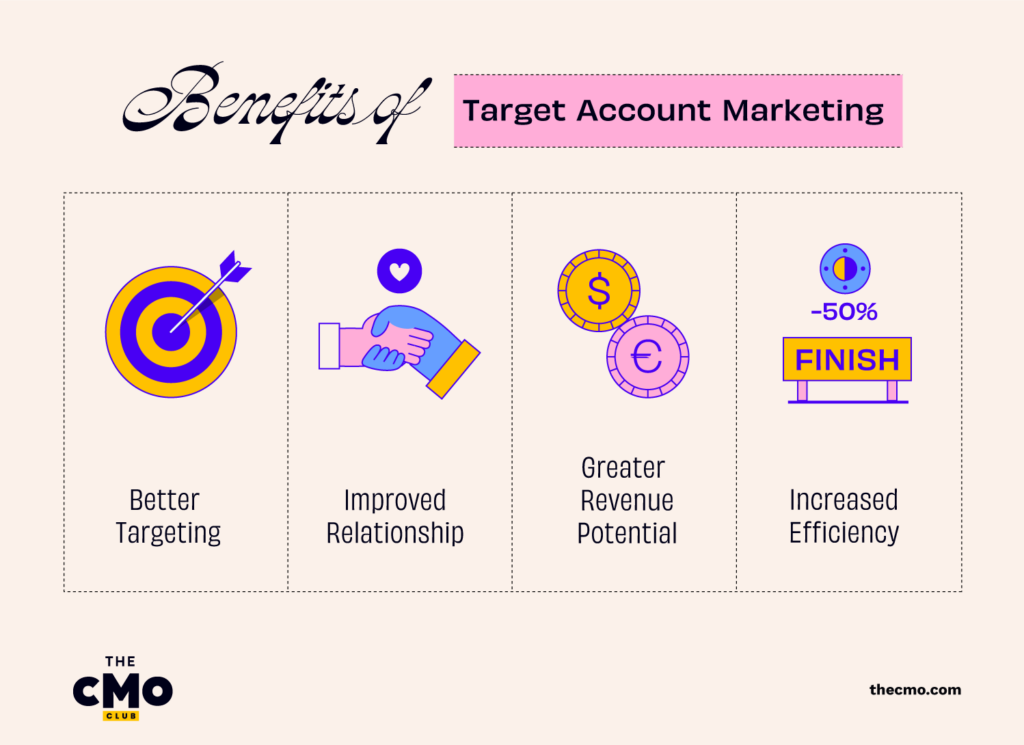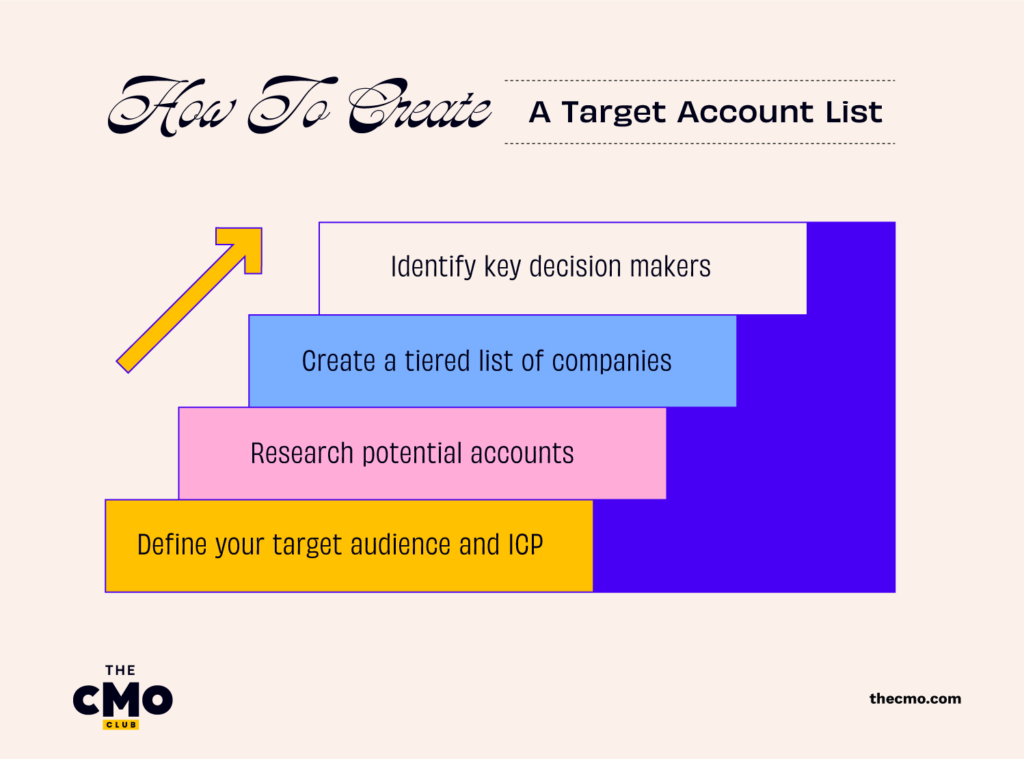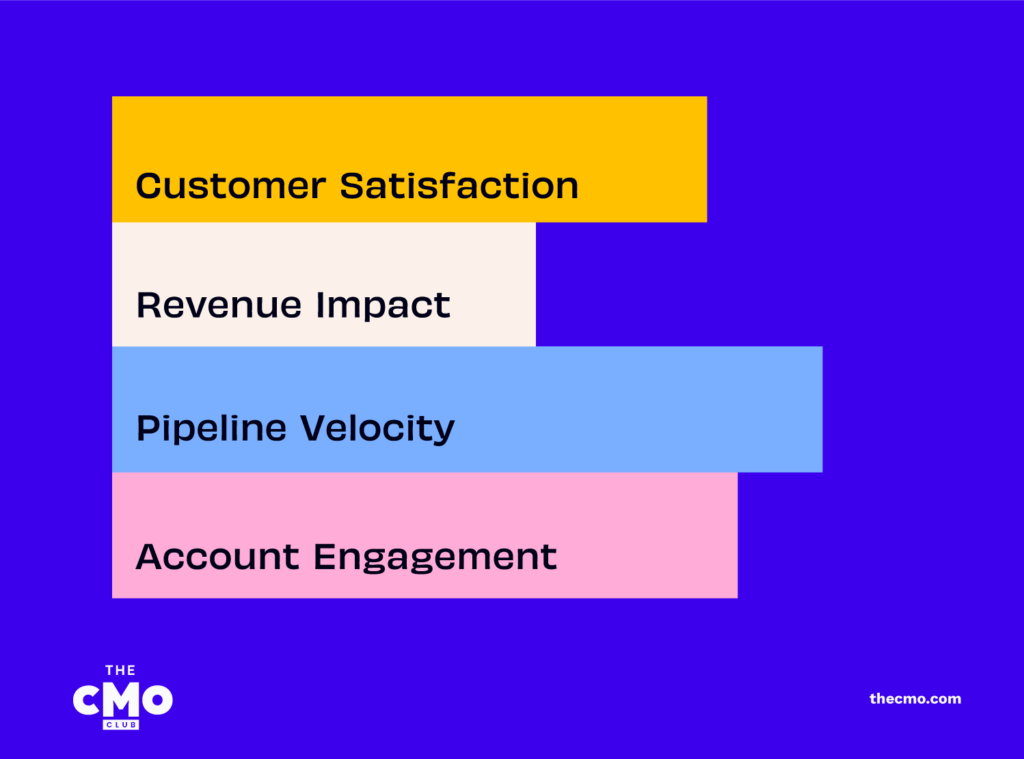In the competitive B2B world, reaching important clients can be time-consuming and tough. However, new research conducted by the ABM Leadership Alliance and ITSMA found that 76% of marketers saw higher ROI with account-based marketing (ABM) than with any other marketing strategy. Why? Due to its targeted, personalized approach.
And so, I’m here to help you create your own target account marketing strategy. I'll share practical strategies to create your target account list and increase your success rate, plus best practices to implement and pitfalls to avoid.
What Is Target Account Marketing?
Target account marketing is an account-based marketing strategy that involves identifying and prioritizing high-value accounts that align with your ideal customer profile (ICP).
Unlike traditional marketing strategies that cast a wide net, target account marketing hones in on specific companies or organizations that have the greatest potential for conversion and revenue generation.
By tailoring marketing efforts to resonate with the needs and pain points of these key accounts, organizations can increase their chances of success and drive meaningful business outcomes.
Benefits Of Target Account Marketing

Better targeting
By focusing on a select group of high-value accounts, businesses can allocate resources more effectively, maximizing ROI and minimizing wasted effort. In a study commissioned by Rollworks, 75% of B2B marketers said using target account marketing as part of their ABM efforts allows them to find and engage with the right buyers earlier in their buying process.
Improved customer relationships
Companies that use target account marketing have reported an 84% improvement in reputation and an 80% improvement in customer relationships, according to Cyance. This is due to the targeted content and personalized experiences tailored to the unique needs of each account. It fosters stronger relationships and builds trust over time.
Greater revenue potential
By prioritizing accounts with the highest revenue potential, organizations can accelerate sales cycles and target accounts who are most likely to make a purchase decision. Payscale, for example, is a modern compensation software that turned to target account marketing to encourage overall growth. Within seven months they saw a 500% increase in target account traffic AND an ROI increase of 6x in revenue, according to Rollworks.
Increased efficiency
Target account marketing streamlines the sales and marketing process by aligning efforts around specific accounts. In one study shared by Rollworks, target account marketing reduced up to 50% of sales time wasted on unqualified leads and increased overall efficiency with inbound marketing.
How To Create A Target Account List

Creating a target account list is a critical step in the success of your target account marketing strategy. Here's a detailed breakdown of how to create a list of the right accounts and achieve abm success:
1. Define your target audience and ICP
Your first task is to clearly define your ideal customer profile (ICP). This involves identifying the characteristics of the companies or organizations that are most likely to be your potential customers. Consider factors such as:
- Industry: Which industries are most relevant to your offerings?
- Company Size: What is the ideal size of the companies you want to target?
- Demographics: Are there specific demographic characteristics that define your target audience?
- Pain Points: What challenges or pain points does your offering address?
By clearly defining your ICP, you can narrow down your focus and ensure that your ABM strategy is directed toward accounts with the highest potential for success.
2. Research potential accounts (determining fit and value)
Once you've established your ICP, conduct thorough research to identify potential accounts that match your criteria. Use various sources of information, including:
- Market Research: Use market research reports and industry analysis to identify trends and opportunities within your target market.
- Company Databases: Access company databases and business directories to compile a list of potential accounts.
- Online Research: Explore company websites, social media profiles, and news articles to gather information about potential accounts.
Evaluate factors such as company size, revenue, growth trajectory, industry relevance, and existing relationships to determine the suitability of each account.
3. Create a tiered list of companies
Segment the potential accounts into tiers of target companies based on their fit and value to your organization. Consider factors such as:
- Fit with ICP: How closely does each account align with your ideal customer profile?
- Revenue Potential: What is the revenue potential of each account?
- Strategic Importance: Are there accounts that align with your long-term business goals or strategic initiatives?
Prioritize high-value accounts by placing them in top tiers, while still considering the potential of lower-tier accounts for future engagement.
4. Identify key decision makers
Identify the key decision makers within each target account, including stakeholders involved in the purchasing process. This may include individuals such as:
- C-Suite Executives: CEOs, CMOs, CFOs, etc.
- Department Heads: Heads of departments relevant to your offering.
- Influencers: Individuals who may influence the decision-making process.
Understanding the decision-making hierarchy within each account is crucial for tailoring your messaging and engagement strategy effectively.
By following these steps and creating a well-defined target account list, you can focus your sales process and sales reps on high-potential accounts that are most likely to close deals. Remember to regularly review and update your target account list as your business evolves and new opportunities emerge.
Target Account Marketing Strategies
Personalized content marketing
Deliver personalized content experiences tailored to the specific pain points, challenges, and objectives of each target account. You can leverage account-based insights to create content assets such as whitepapers, case studies, and blog posts that address the unique needs of decision-makers within the organization. Then, use dynamic content delivery mechanisms to ensure that each interaction with your content feels highly relevant and valuable to the recipient.
Social media marketing
Utilize social media platforms to build relationships and engage with key stakeholders within target accounts. Develop targeted advertising campaigns that are tailored to the demographics, interests, and behaviors of decision-makers in each account. Foster two-way communication by actively participating in relevant industry discussions, responding to inquiries, and sharing thought leadership content that demonstrates your expertise and understanding of the challenges facing your target accounts.
Email marketing
Implement account-based email marketing strategies to nurture relationships and drive engagement within target accounts. Leverage account segmentation and email personalization techniques to deliver highly relevant and timely content directly to the inboxes of key decision-makers. Craft compelling email messages that speak directly to the pain points, goals, and priorities of each account, offering valuable insights, solutions, and resources to guide them along their buyer's journey.
Event marketing
Host or participate in events that are tailored to the interests, preferences, and priorities of your target accounts. Develop customized event experiences that provide opportunities for decision-makers to learn, network, and engage with your brand in a meaningful way. Whether it's hosting exclusive VIP dinners, organizing targeted workshops, or sponsoring CMO conferences, ensure that your event marketing efforts are aligned with the unique needs and objectives of each account.
Sales outreach
Equip your sales team with account-based selling strategies and personalized outreach tactics designed to resonate with key decision-makers within target accounts. Leverage account insights and buyer personas to craft highly tailored messaging that speaks directly to the pain points, challenges, and goals of each individual prospect. I highly recommend taking a multi-channel approach that includes personalized emails, phone calls, social media interactions, and personalized sales collateral to engage decision-makers and drive meaningful conversations that lead to closed deals.
There’s so many ways to increase engagement with target account marketing that The CMO created an entire article dedicated to building your account-based engagement strategy.
Measuring Target Account Marketing Success

Success in target account marketing can be measured through various key performance indicators (KPIs), including:
Account engagement
Monitor engagement metrics such as website visits, content downloads, and social media interactions to gauge interest and intent.
Pipeline velocity
Track the progression of target accounts through the sales pipeline, measuring factors such as conversion rates, deal velocity, and win rates.
Revenue impact
Measure the direct impact of target account marketing efforts on revenue generation, including the acquisition of new customers and expansion within existing accounts.
Customer satisfaction
Solicit feedback from key accounts to assess satisfaction levels and identify areas for improvement in the customer experience.
And you don’t even have to do this part manually! There are tons of options for account-based marketing software that will do all this work for you.
Target Account Marketing Best Practices
To maximize the effectiveness of your TAM efforts, it's essential to follow some proven ABM best practices and avoid common ABM mistakes. Here are actionable tips and tricks:
Align sales and marketing teams
Ensure close collaboration and alignment between your salespeople and marketing teams. Encourage regular communication and shared goals to ensure a cohesive approach to TAM. This alignment is crucial for delivering consistent messaging across your digital marketing efforts and a consistent experience throughout your sales funnel.
Leverage data and insights
Utilize data and insights to inform your TAM strategy. Leverage data analytics tools to gain a deeper understanding of your target audience's behavior, preferences, and pain points. Use this information to personalize your messaging and tailor your outreach efforts for maximum impact.
Focus on relationship-building
Prioritize building meaningful relationships with key stakeholders within target accounts. Invest time in networking, partnerships, engaging with prospects on social media, and providing value through educational content and resources. Building trust and rapport is essential for driving long-term relationships, securing high-value deals, and increasing lead generation through referrals.
Measure and optimize continuously
Regularly monitor and measure the performance of your TAM campaigns against key metrics such as engagement, conversion rates, and revenue generated. Use A/B testing and experimentation to identify what marketing tactics are most effective and optimize your approach accordingly. Continuously iterate and refine your TAM strategy based on data-driven insights.
Things to avoid:
- Ignoring Data Insights: Don't overlook the valuable insights provided by data analytics. Base your TAM strategy on data-driven decisions rather than assumptions or gut feelings.
- Overlooking Personalization: Avoid generic, one-size-fits-all messaging. Personalize your communications and tailor your approach to the specific needs of each target account.
- Neglecting Relationship Building: Don't focus solely on sales pitches and promotional messages. Invest time in building genuine relationships with key stakeholders to foster trust and credibility.
Join For More Targeted Insights
Target account marketing offers a strategic approach to drive revenue growth and foster stronger customer relationships by focusing efforts on high-value accounts that are most likely to convert.
By defining clear target account criteria, implementing personalized marketing campaigns, and measuring performance effectively, organizations can unlock the full potential of target account marketing.
If you found value in this article, share it with your LinkedIn network! For more targeted insights and actionable strategies, subscribe to the CMO newsletter today.


